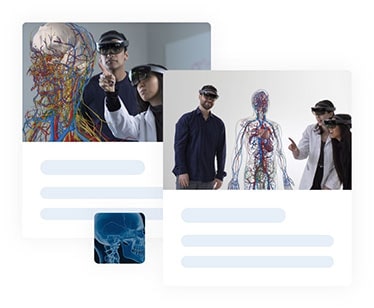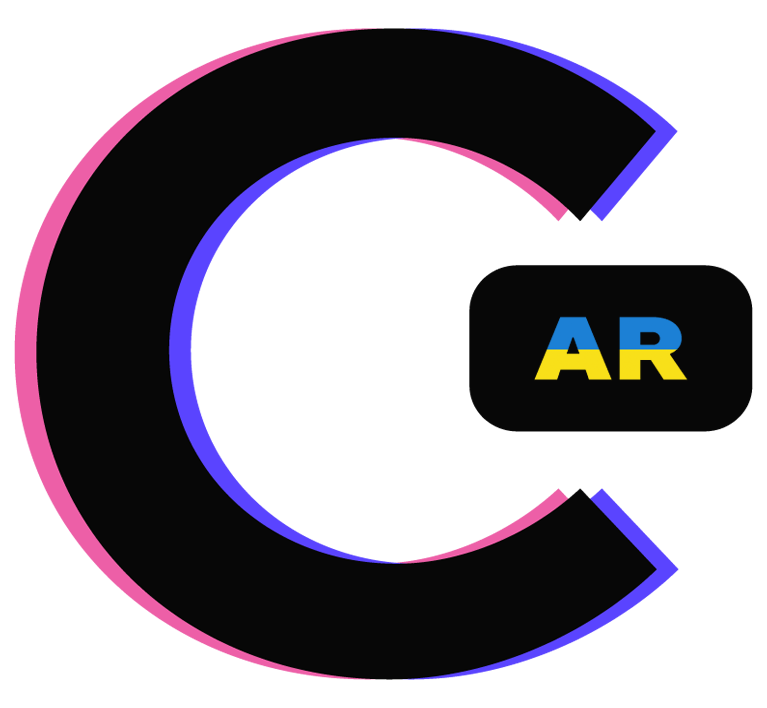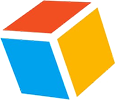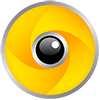Get Top Rated Augmented Reality Applications
Catchar’s hub presents 2,500+ of different AR projects and experiences for iOS, Android, Instagram, Snapchat, Magic Leap, HoloLens and WebAR. Find the best ones, discover specifications and features, and download them to your device or simply use them online. Don’t forget to rate them and share your feedback. If you are the creator of projects and experiences, feel free to submit them to Catchar. We espouse AR/MR creators and their projects and help them to get more impressions, downloads and shares.

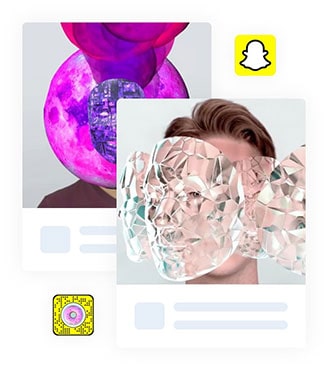
Best Snapchat Lenses and Experiences
By using Catchar you can discover thousands of the best Augmented Reality experiences made by official Lens Studio creators and Snapchat lens creative partners. Some lenses reach millions of impressions, captures and shares. Here you can also find and discover lots of branded AR experiences and campaigns for CPG (food and drinks) that were made for well-known brands and companies (e.g. Coca-Cola, Taco Bell, Snickers, etc.). All lenses that are presented on Catchar are free to download and use. If you are a Snapchat lens creator, sign up today on Catchar to share and organize your AR portfolio, collaborate with other creators and get hired by brands and businesses.
Effects for Instagram, Facebook and Messenger
In the last few years, Spark AR creators deliver immersive Augmented Reality effects that are compatible with Instagram, Facebook and Messenger apps. These types of AR effects provide the ability to transform and augment people’s faces, overlay buildings and attractions with digital content and information, visualize 3D objects and discover them in real-world surroundings. Users of the Catchar community and hub are able to find, search and download all types of AR experiences that were released in the Spark AR studio. All of them are sorted by category, date and rating.
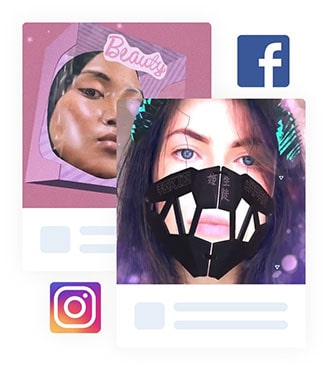

Entertainment AR Apps and Projects
Nowadays entertainment Augmented and Mixed Reality apps and projects are probably the most popular type of AR experiences. Smartphones like iPhones and Android devices allow the use of entertainment AR apps without additional hardware. Starting from facial AR lenses and ending with apps that allow the complete customization of the physical environment, entertainment AR experiences have perfect user adoption and word of mouth effects. Entertainment AR/MR projects and experiences can combine 3D design, motion graphics, control by gesture and voice control. Even Magic Leap, a well-known MR startup, has used demos of entertainment apps and projects to attract first investors and customers. Brands use entertainment components in advertising campaigns to engage with their consumers in a new way.
Best Augmented and Mixed Reality Games
Augmented and Mixed Reality-based games deliver a whole new level of user experience and emotional levels. Unlike Virtual Reality gaming, players in AR are able to interact with visual and audio game content in a real-time physical environment. While VR games require specialized headsets, AR gamers can use smartphones and tablets (iPhones, iPads, Android devices, Microsoft Windows devices). In terms of stats and engagement, 35 percent of non-gamers express an interest in AR gaming. The “AR Gaming Market” valuation is expected to reach 284.9 billion dollars by 2023. When people talk about AR games, our minds instantly start thinking about Pokemon Go, but nowadays there are lots of other popular AR games available. Minecraft Earth, Jurassic World, Harry Potter and Ghostbusters have become available in AR. Moreover, Augmented Reality puzzles and shooters are becoming more and more popular.

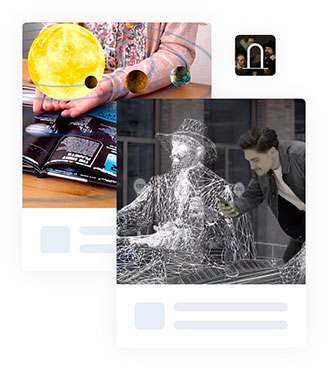
AR and MR Projects for Education
AR and MR technologies have become applicable to different educational fields, such as chemistry, paleontology, history and science, military training and even in the space industry. By using Augmented Reality for medical education and training, students can learn human anatomy in depth. Education in AR and MR can combine interactive stories, 3D models, infographics, audio and video lessons. There are several ways to unlock and discover AR/MR lessons and experiences for education. The most common is when AR lessons can be unlocked by scanning books, magazines or other printed educational materials. By using SLAM-based AR/MR experiences, children and adults are able to discover interactive lessons near them by pointing their devices at any surface.
Augmented and Mixed Reality Utilities
AR and MR-based projects in this category make our lives simpler. They change the way we work, search, measure, navigate, communicate, read and drive. Unlike basic mobile and desktop applications, Augmented and Mixed Reality utilities provide more interaction with digital content in real-world surroundings. For example, users can measure their luggage, or other physical objects, by simply pointing their smartphone’s camera at it. Repairing using Mixed Reality headsets helps specialists to see the guides and tips directly on parts or entire objects. AR/MR utilities are also improving collaboration and teamwork. By using these utilities, users can see, communicate and collaborate with their co-workers in real-time. Augmented and Mixed Reality allows activating the online presence via holograms of other users and coworkers.
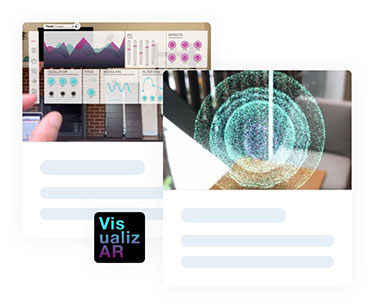

Augmented and Mixed Reality Experiences for Printing
All printed images can be used as markers where Augmented and Mixed Reality content can be placed. Marker-based experiences provide the ability to animate any pictures, business cards, posters, labels, flyers, billboards, newspapers, magazines, books, packages, etc. Once the user scans the target image, digital content and an AR/MR experience will automatically popup. These experiences may contain 3D models, motion graphics, video, sound, text and digital images. Some experiences look very bewitching and can immerse users into an interactive Augmented Reality story. In addition, digital CTA (Call-to-Action) buttons can be placed directly on physical images. By using these buttons users can immediately call, message businesses or order products online directly from AR/MR experiences. In this way, regular printed advertising can be completely changed and transformed into a new customer experience.
Augmented Reality Editors and Builders
The editors and builders presented on Catchar assist in creating Augmented and Mixed Reality experiences and projects. There are several types of AR/MR editors available for both technical and nontechnical users. Some of them provide the ability to create experiences through simple drag-n-drop digital content (i.e. no coding required), while others are designed for the more advanced users and require the use of JavaScript or another scripts to build AR. By combining 3D models, text, motion graphics, audio and video content, creators are able to build rich Augmented Reality experiences. CMS (Content Management System) allows the drafting, managing and publishing of AR experiences at any time and in any place. AR editors can be software, mobile and web-based applications. Distribution of AR content from editors is possible to iOS, Android and Web applications. Users and customers have to download or use these applications to discover Augmented Reality content and experiences.
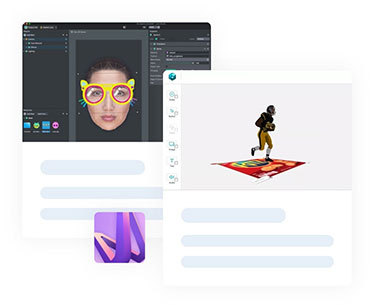
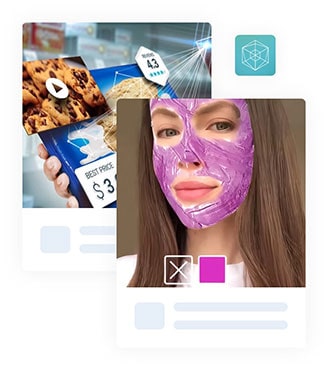
AR and MR Projects for E-commerce
61% of shoppers say that they prefer to make purchases through websites or mobile apps that offer AR experiences and support virtual try-on features. These features help shoppers to preview items in realtime prior ordering and buying. From eyewear to furniture there are lots of fields where virtual try-ons can be applied in e-commerce. As a result, AR can fundamentally change the bricks-and-mortar shopping experience by transferring it directly to where the consumer is. From a business owner’s standpoint, this is a chance to optimize spends and transform their stores into an online Augmented Reality shopping experience.
AR Apps and Experiences for Furniture Business
Furnishing of apartments, houses and offices typically starts from space measuring, searching for furniture and visualizing everything into a 3D plan. But AR-enabled applications and projects allow combining all these steps into one single process. Users have to download a mobile application or launch a website that supports AR experiences. By picking up preferred items from the catalog, users can try and explore them directly in their own surroundings via AR experiences. What’s more important is that users have the ability to change the position of virtual furniture in the physical world through controls on their smartphones. All items in the Augmented Reality experience can be checked in a full-size view, so users have the ability to measure how they will look in their own space. Augmented Reality is also changing the furniture business. This technology opens higher online sales and greater buyer comfort, since customers have the ability to view, try and order furniture from anywhere, by using mobile or web applications.
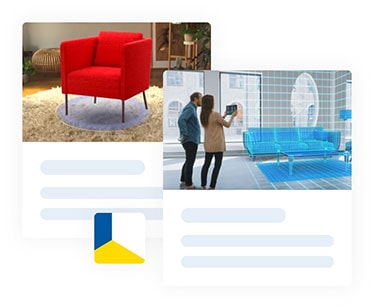
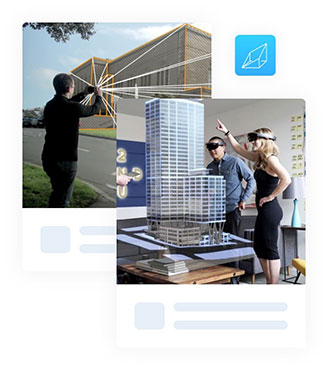
Augmented and Mixed Reality for Architecture
There are a few ways to use Augmented and Mixed Reality in architecture and the construction business. The first one works through marker-based AR experiences and allows reviving of blueprints. As a result, architects can visualize their work using 3D models and motion graphics. With the help of computer vision, SLAM and the ability to detect real-world coordinates, the next use case provides the ability to explore full-sized Augmented buildings in a physical environment. Construction and architecture firms are able to demonstrate, and even do virtual walk-ins, inside the future building, store, house or other structure. An additional way is to use AR portals for architecture. Users can jump into a 360-dimension model of the construction site or fully completed building to walk around. Nowadays lots of applications in this same category can visualize attractions, monuments and historical buildings.
AR in Consumer Packaged Goods (CPG)
Brands use Augmented Reality experiences to add an additional digital layer to CPG’s (packaged food and drinks) useful information or entertaining features. In addition, these brands are able to display nutrition facts, price comparisons, reviews, nearby stores and other information through AR content, directly on the packaging. Additional features such as minigames, puzzles and quizzes provide more engagement among users. To stimulate purchasing, brands often hide specific triggers on beverage or package labels. Only after scanning them are customers able to unlock and discover AR experiences. Moreover, brands use AR for CPG to increase brand loyalty. Cognitive stories about manufacturing processes and ingredients help brands to be more transparent with their customers. Lots of famous brands, like Coca-Cola, P&G and Mondelez have already tried and are continuing to integrate AR experiences into the consumer journey. Get started today and discover hundreds of different AR experiences and examples on Catchar.
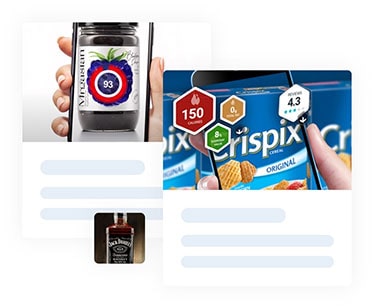
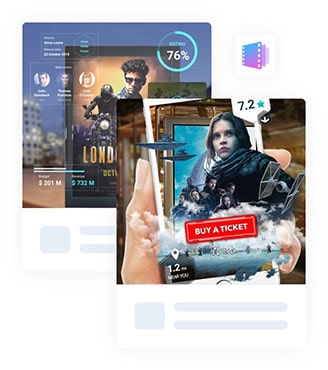
Augmented Reality and
Movies
We all remember fragments from futuristic movies, such as Minority Report and Iron Man, where heroes used Mixed Reality to interact with digital content. But what about use cases for a wider audience that are available right now? One of the most common examples is to use AR to watch movie trailers, discover reviews and movie details directly on movie posters, flyers and tickets. Some apps even allow the transformation of your iPhone or Android devices into a production Augmented Reality film studio. As a result, users are able to record stories with predefined AR characters and combine them into a fully-fledged movie. Watching movies using Mixed Reality headsets can totally upgrade viewers’ experiences. By wearing an MR device viewers can become part of a movie, interact with characters through gesture control and fully control the movie playback.
AR/MR Apps and Project for Healthcare
The way to display information during surgical procedures has not changed for a long time. Regular LCD screens could be replaced with Mixed Reality headsets. These types of devices allow doctors to discover all-important stats about a patient, in real-time, and be online with their colleagues. In addition, they can be extremely useful during very long and difficult surgical procedures. However, these are not only the one use case where Augmented and Mixed Reality domains can be applicable. These technologies are bridging the gap between patients and doctors, around the world, by connecting them through AR/MR experiences. For example, patients can talk one on one with a digital hologram of a doctor from home or any other comfortable spot. This use case may move medical surveys to the next level. According to Zion Market Research, the expected global value of the AR/MR/VR healthcare sector will be $5.1 billion by 2025.
